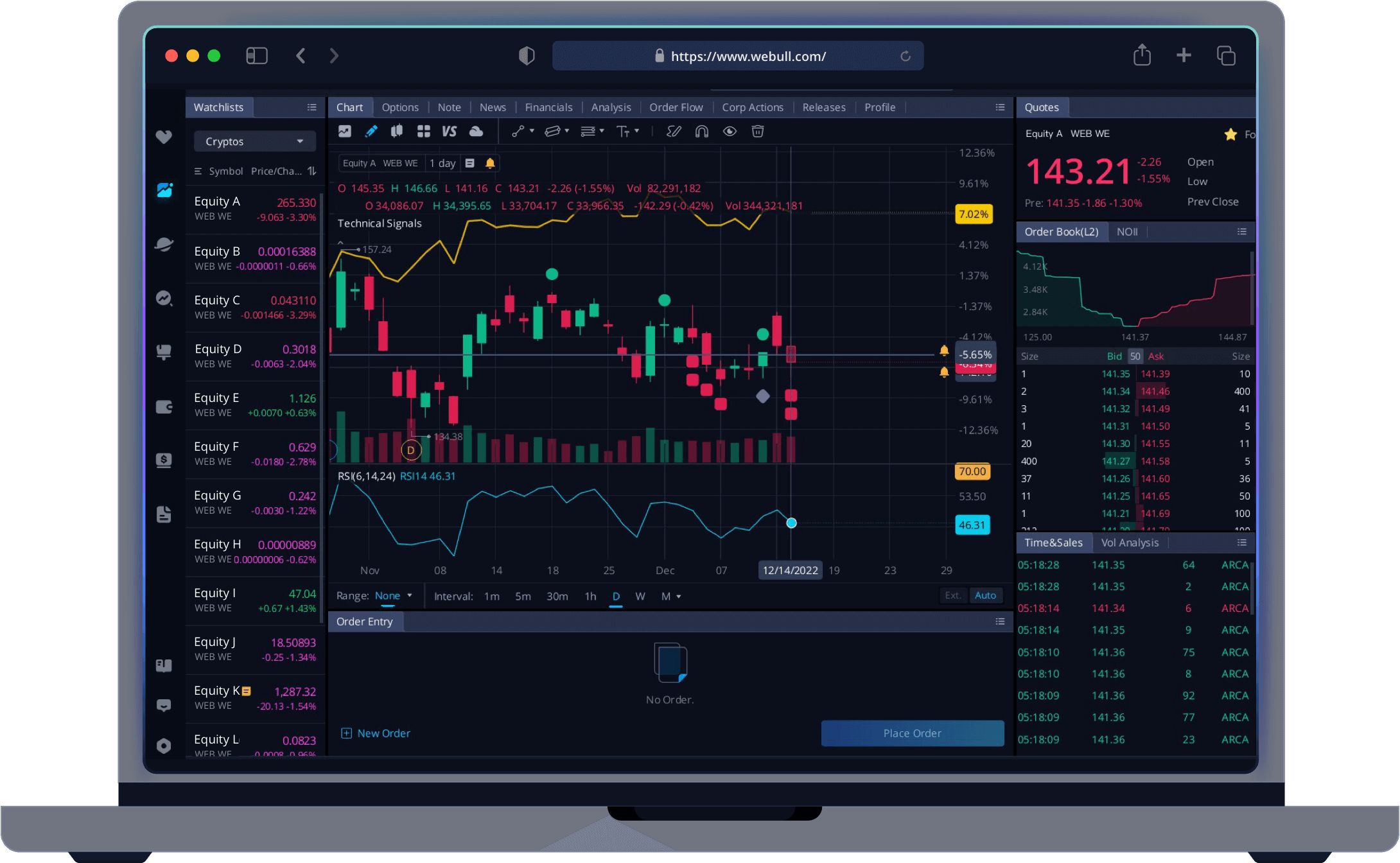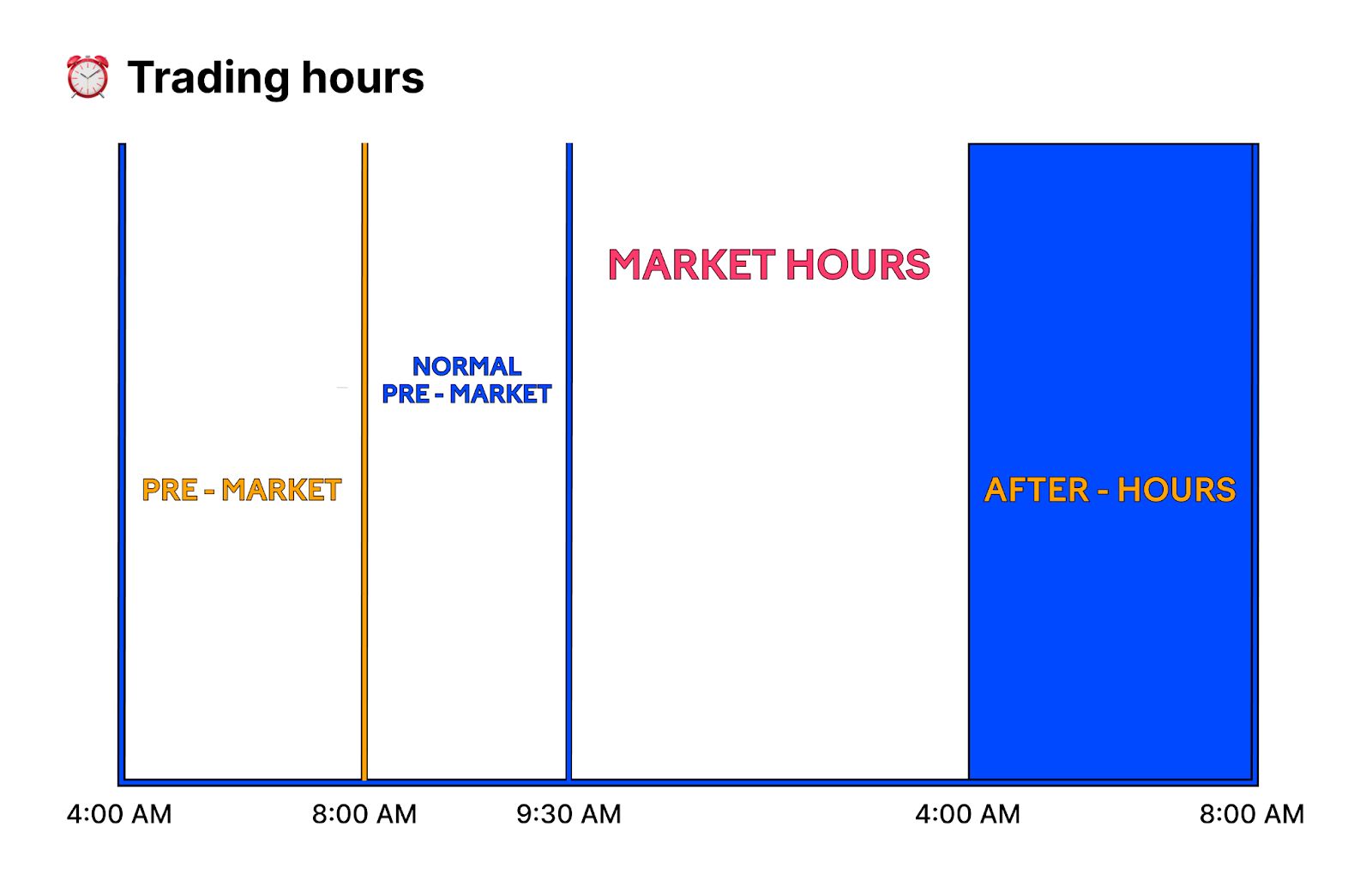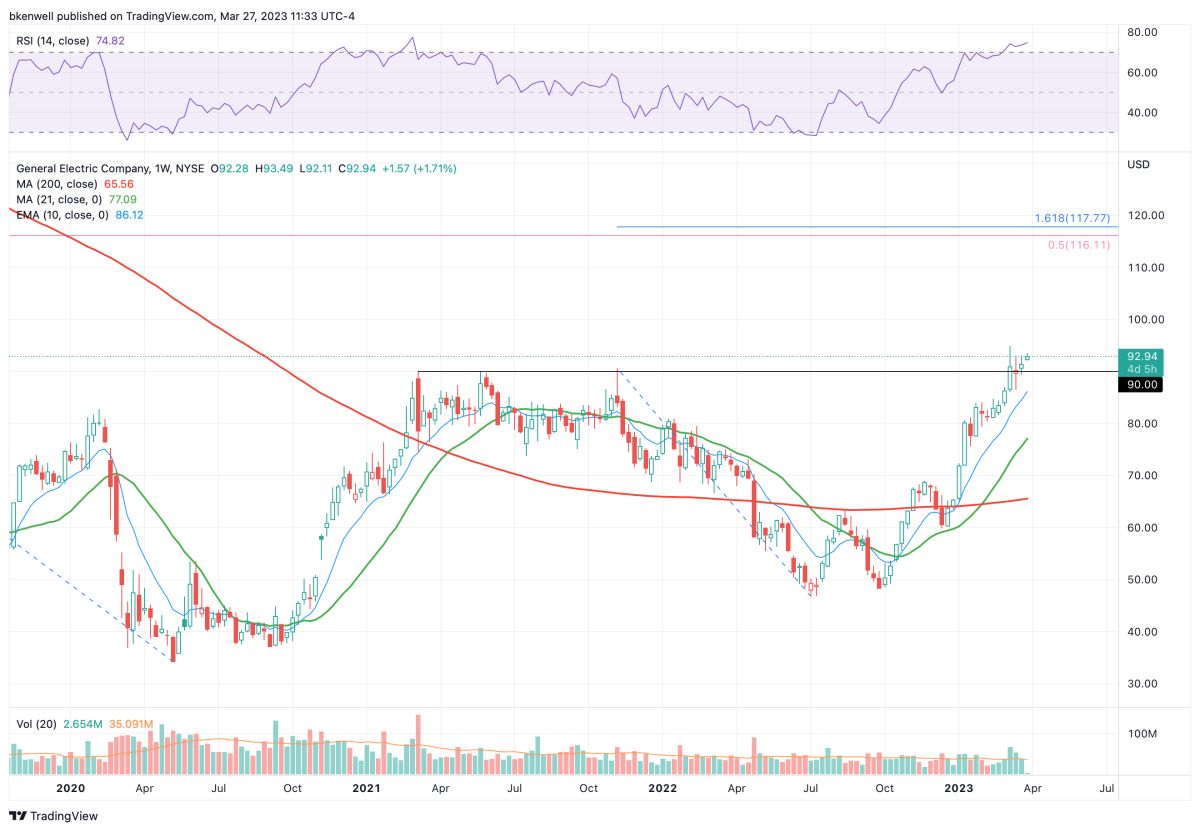Introduction
Welcome to the exciting world of trading! Whether you are a seasoned investor or just starting out, trading can offer a range of opportunities to make profits in the financial markets. But what exactly is trading and how does it work?
At its core, trading refers to the buying and selling of financial instruments, such as stocks, bonds, commodities, or currencies, with the goal of making a profit. Traders use various strategies and techniques to analyze market trends, identify potential opportunities, and execute trades to capitalize on those opportunities.
Trading has evolved significantly over the years, thanks to advancements in technology and the rise of online trading platforms. Today, individuals from all walks of life can participate in trading activities and potentially earn profits from the comfort of their own homes.
This article will provide you with a comprehensive overview of trading, including different types of trading, common strategies, essential trading terms, factors to consider, risks and rewards, tools and platforms, and important tips to keep in mind.
Trading can be an excellent way to grow your wealth, diversify your investment portfolio, and take advantage of global market movements. However, it is important to understand that trading also carries certain risks. It requires knowledge, skill, and discipline to navigate the volatile markets successfully.
Throughout this article, we will equip you with the necessary information and insights to help you embark on your trading journey in a confident and informed manner. So, buckle up and get ready to learn all about the captivating world of trading!
What is Trading?
Trading is the process of buying and selling financial instruments in the financial markets to generate profits. It involves actively participating in the market, identifying opportunities, and executing trades to take advantage of price fluctuations.
When you enter a trade, you speculate on the future movement of the asset’s price. If you believe the price will rise, you take a long position (buying the asset). Conversely, if you anticipate the price will fall, you take a short position (selling the asset). The goal is to buy low and sell high (or sell high and buy low in the case of short selling), pocketing the price difference as profit.
The financial instruments that can be traded include stocks, bonds, options, futures, commodities, currencies, and more. Each market has its unique characteristics and trading strategies.
Traders can choose from different timeframes to execute their trades. Some prefer short-term trading (intraday trading or day trading), where positions are opened and closed within a single day. Others opt for medium-term trading (swing trading), holding onto positions for days or weeks. Lastly, there are long-term traders who aim to capitalize on significant market trends and hold onto positions for months or even years.
Trading provides opportunities to generate profits in both rising and falling markets. In bullish markets, traders can buy assets at lower prices and sell them when the prices rise. In bearish markets, traders can profit by short selling assets, selling them at high prices, and buying them back at lower prices.
It is important to note that trading is different from investing. Investors typically have a long-term perspective and focus on the fundamental value of an asset. They aim to generate returns over an extended period, often years or decades. Traders, on the other hand, take advantage of shorter-term price movements and seek to profit from market volatility.
Overall, trading is a dynamic and exciting activity that allows individuals to potentially generate profits from the movements in financial markets. It requires a solid understanding of market analysis, risk management, and discipline to succeed. In the following sections, we will delve deeper into the various types of trading, key strategies, important trading terms, and more.
Different Types of Trading
Trading encompasses various styles and approaches, with each type suited to different goals, timeframes, and risk tolerance levels. Here are some of the most common types of trading:
- Day Trading: Day trading involves opening and closing positions within the same trading day, with the goal of profiting from intraday price movements. Day traders closely monitor charts, technical indicators, and news events to identify short-term trading opportunities. This style of trading requires active attention throughout the day and quick decision-making skills.
- Swing Trading: Swing trading involves holding positions for a few days to several weeks, taking advantage of medium-term price fluctuations. Swing traders aim to capture the “swings” or price movements within an established trend. They rely on technical analysis, chart patterns, and market indicators to identify potential entry and exit points.
- Position Trading: Position trading, also known as trend trading, is a long-term strategy where traders hold positions for weeks, months, or even years. Position traders focus on major market trends and try to take advantage of significant price movements. This approach requires a great deal of patience and an ability to ride out short-term market fluctuations.
- Scalping: Scalping is a high-frequency trading method where traders aim to profit from small price movements. Scalpers open and close trades within seconds to minutes, executing multiple trades throughout the day. This style relies on tight spreads, fast order execution, and precise timing.
- Algorithmic Trading: Algorithmic trading, or automated trading, involves using computer programs or “bots” to execute trades based on pre-established rules and algorithms. These algorithms analyze market data, trends, and indicators to make trading decisions. Algorithmic trading is often used by institutional investors and hedge funds.
It’s important to remember that each type of trading has its own advantages and disadvantages. The choice of trading style will depend on your personality, available time, risk tolerance, and trading goals.
For beginners, it’s recommended to start with a longer-term approach like swing trading or position trading, as these styles allow for more strategic decision-making and reduce the impact of short-term market volatility. As you gain experience and confidence, you can explore other trading styles and find the approach that aligns best with your preferences.
In the next section, we will explore some popular trading strategies that traders use to gain an edge in the market.
Strategies for Trading
Successful trading requires a well-thought-out strategy that helps traders make informed decisions and manage risks. Here are some popular trading strategies used by traders:
- Trend Following: This strategy involves identifying and following the trends in the market. Traders look for assets that are exhibiting a clear upward or downward movement and seek to profit from riding the trend. They may use technical indicators, such as moving averages or trendlines, to confirm the trend direction and determine entry and exit points.
- Breakout Trading: Breakout trading involves entering a trade when the price breaks out of a predetermined range or pattern. Traders look for key levels of support or resistance and wait for the price to break above or below these levels. This strategy aims to capture significant price movements that occur after a breakout.
- Contrarian Trading: Contrarian traders take positions opposite to the prevailing market sentiment. They believe that markets tend to overreact, leading to potential reversals. Contrarian traders look for oversold or overbought conditions and take positions against the crowd. This strategy requires careful analysis of market sentiment, as well as risk management.
- Mean Reversion: Mean reversion is based on the concept that prices tend to revert to their average or mean over time. Traders using this strategy identify assets that have deviated significantly from their average and anticipate a return to the mean. They take positions that profit from the price correction back to the average.
- Scalping: Scalping is a short-term strategy where traders aim to make small profits from multiple trades throughout the day. Scalpers capitalize on quick price movements and rely on technical indicators, order flow, and tight risk management to execute high-frequency trades. This strategy requires discipline, fast decision-making, and the ability to handle rapid market fluctuations.
Each strategy has its own set of rules, entry and exit criteria, and risk management guidelines. It’s crucial for traders to thoroughly understand the strategy they choose and practice it with discipline and consistency.
Additionally, it’s important to adapt the chosen strategy to the current market conditions. Market dynamics can change, and a strategy that works well in one market environment may not be as effective in another. Traders should continuously monitor and analyze the markets and be willing to adjust their approach as needed.
Remember, no strategy guarantees success in trading. It is essential to backtest and practice using a strategy in a simulated environment before implementing it with real capital. This allows traders to gain confidence in the strategy and make necessary adjustments before risking their hard-earned money.
In the next section, we will explore some common trading terms that traders should be familiar with.
Common Trading Terms
When diving into the world of trading, it’s important to familiarize yourself with some common trading terms that you may come across. Understanding these terms will help you navigate the markets and communicate effectively with fellow traders and brokers. Here are a few key terms:
- Asset: An asset refers to anything that holds value and can be traded. It can include stocks, currencies, commodities, bonds, and more.
- Order Types: There are different types of orders that traders use to enter or exit positions. Market orders are executed immediately at the best available price, whereas limit orders allow traders to specify a price at which they are willing to buy or sell an asset.
- Bid/Ask: The bid price is the highest price that buyers are willing to pay for an asset, while the ask price is the lowest price that sellers are asking for. The bid-ask spread represents the difference between these two prices and is an important factor to consider when trading.
- Leverage: Leverage allows traders to control larger positions with a smaller amount of capital. It is a borrowed capital provided by brokers to amplify potential profits (and losses).
- Stop Loss/Take Profit: A stop-loss order is a predetermined price level at which traders exit a trade to limit potential losses. Take-profit orders, on the other hand, specify a price level at which traders exit a trade to secure profits.
- Margin: Margin is the amount of capital required to open and maintain a leveraged position. It represents a portion of the total position value that traders must provide as collateral.
- Volatility: Volatility refers to the rate and magnitude of price movements in the market. High volatility indicates large price swings, while low volatility suggests stable prices.
- Liquidity: Liquidity refers to the ease of buying or selling an asset without causing significant price fluctuations. Highly liquid assets have a large number of buyers and sellers, making it easier to enter and exit positions.
- Margin Call: A margin call occurs when a trader’s account falls below the required margin level. It prompts the broker to request additional funds to maintain the open positions or risk closure of the positions.
- Slippage: Slippage refers to the difference between the expected price of a trade and the price at which it is executed. It occurs during periods of high volatility or low liquidity when the actual execution price deviates from the requested price.
These are just a few of the many terms used in trading. As you delve deeper into the world of trading, you will come across more terms that are specific to different markets and strategies. It’s important to continuously educate yourself and stay updated with the latest industry terminology.
In the next section, we will discuss some factors to consider when trading, helping you make better-informed trading decisions.
Factors to Consider when Trading
Trading involves making decisions in a dynamic and ever-changing market environment. To make informed and successful trading decisions, it is essential to consider several factors that can impact the outcome. Here are some key factors to consider:
- Market Analysis: Before entering a trade, it’s crucial to conduct thorough market analysis. This involves assessing the overall market trends, studying historical price patterns, and analyzing relevant news and economic indicators. Technical analysis and fundamental analysis are common approaches used to evaluate market conditions.
- Risk tolerance: Knowing your risk tolerance is vital in trading. It refers to the level of uncertainty you are willing to endure when taking on trades. Assessing your risk tolerance helps determine the appropriate position size and the use of risk management tools like stop-loss orders.
- Timeframe: Your trading timeframe is an important consideration. Different trading styles, such as day trading, swing trading, or long-term investing, require different levels of commitment and have different risk-reward profiles. Align your trading timeframe with your goals and available time for trading.
- Capital Management: Managing your capital is crucial to long-term trading success. This involves determining how much capital to allocate to each trade, setting profit targets and risk limits, and diversifying your portfolio to spread risk. Effective capital management helps protect your trading account from substantial losses.
- Psychology and Emotions: Trading psychology plays a crucial role in decision-making. Emotions like fear, greed, and impatience can cloud judgment and lead to irrational decisions. Maintaining discipline, sticking to your trading plan, and controlling emotions are essential to successful trading.
- News and Events: Stay informed about important news events and economic releases that can impact the financial markets. News such as economic data, central bank announcements, geopolitical events, and corporate earnings reports can lead to significant market volatility and impact the price movement of assets.
- Technical Indicators: Utilize technical indicators to assist in making trading decisions. These indicators help identify trends, price patterns, and potential entry and exit points. However, it’s important to remember that no indicator guarantees success and should be used in conjunction with other analysis methods.
- Market Liquidity: Consider the liquidity of the market you are trading in. Highly liquid markets allow for easy entry and exit of positions without substantial price slippage. Low liquidity markets may have wider spreads and limited trading opportunities, which may impact trade execution.
- Continued Learning: Stay curious and committed to continuous learning in the trading field. Markets are ever-changing, and new strategies, technologies, and market dynamics emerge over time. Engage in ongoing education, study successful traders, and stay updated with the latest trends and developments.
Considering these factors can help you make more informed trading decisions and increase your chances of success. It’s important to develop a trading plan and consistently assess and adapt your approach based on these factors and the evolving market conditions.
In the next section, we will discuss the risks and rewards associated with trading.
Risks and Rewards of Trading
Trading offers the potential for both rewards and risks. Understanding and managing these aspects is crucial for any trader. Let’s explore the risks and rewards associated with trading:
Risks:
1. Capital Loss: Trading involves the risk of losing capital. Markets can be unpredictable, and even with thorough analysis and risk management, losses can occur. It’s important to only risk capital that you can afford to lose.
2. Market Volatility: Volatility can be both an opportunity and a risk. While it creates trading opportunities, it can also lead to rapid and significant price fluctuations. Sudden market moves can result in substantial gains or losses, depending on the direction of the trade.
3. Leverage: The use of leverage amplifies potential profits, but it also magnifies losses. Trading on margin carries a higher level of risk, as a small adverse price movement can lead to significant losses. It’s important to use leverage responsibly and understand its impact on your trading.
4. Psychological Factors: Emotions like fear, greed, and impatience can hinder rational decision-making. Impulsive trades driven by emotions can result in losses. Developing discipline, controlling emotions, and adhering to a well-defined trading plan are crucial for managing these risks.
Rewards:
1. Potential Profits: The primary reward of trading is the potential to generate substantial profits. Successful traders who employ effective strategies and risk management techniques can achieve consistent profitability over time.
2. Financial Independence: Trading offers the possibility of financial independence and the ability to generate income without traditional employment. By honing your trading skills and remaining disciplined, you can create a sustainable source of income.
3. Flexible Lifestyle: Trading provides flexibility in terms of time and location. With online trading platforms, you can trade from anywhere in the world at your convenience. This flexibility allows traders to pursue other interests and enjoy a balanced lifestyle.
4. Continuous Learning: Trading is a dynamic field that requires ongoing education and learning. The process of improving your skills and knowledge can be intellectually stimulating and rewarding in itself. Successful traders embrace continuous learning and adapt to changing market conditions.
It’s important to remember that trading involves inherent risks, and there are no guarantees of profits. Traders should approach the markets with a realistic mindset, acknowledging the potential risks while striving for rewards. Implementing sound risk management strategies, maintaining discipline, and consistently adapting to market conditions are key to managing the risks and increasing the likelihood of rewards.
In the next section, we will explore the various tools and platforms available for trading.
Tools and Platforms for Trading
Trading in today’s digital age has become more accessible than ever before, thanks to various tools and platforms designed to assist traders in their decision-making and execution. Here are some essential tools and platforms used in trading:
- Trading Platforms: Trading platforms are software applications that provide access to the financial markets. They allow traders to execute trades, access real-time market data, analyze charts, and manage their portfolios. Popular trading platforms include MetaTrader, cTrader, and Thinkorswim.
- Charting Tools: Charting tools are used to analyze historical price data and identify patterns or trends. They provide a visual representation of price movements and include various indicators, drawing tools, and time frames to help traders make informed decisions. Examples of charting tools include TradingView, MetaTrader, and NinjaTrader.
- News and Economic Calendars: Staying informed about market news and economic events is crucial for traders. News platforms and economic calendars provide real-time and historical data on economic indicators, central bank announcements, corporate earnings, and geopolitical events that can impact market sentiment. Some popular news platforms are Bloomberg, Reuters, and CNBC.
- Screeners and Scanners: Screeners and scanners help traders identify potential trading opportunities by filtering through thousands of stocks or other financial instruments based on specific criteria. They can be used to find stocks with certain technical patterns, specific price ranges, or fundamental characteristics. Examples include Finviz, Trade Ideas, and StockFetcher.
- Algorithmic Trading Tools: Algorithmic trading tools, often called trading robots or expert advisors, use predefined algorithms to automate trade execution. Traders can code and backtest their strategies or use pre-built algorithms to execute trades automatically. Popular algorithmic trading platforms include MetaTrader, NinjaTrader, and TradeStation.
- Risk Management Tools: Risk management tools help traders monitor and manage their risks. They include features such as stop-loss orders, take-profit orders, and position sizing calculators. By setting appropriate risk levels and implementing these tools, traders can protect their capital and minimize losses.
- Trading Journals: Trading journals are used to track and analyze trades, record observations, and assess trading performance. They help traders review their strategies, identify strengths and weaknesses, and make improvements. Trading journals can be created in simple spreadsheet software or specialized trading journal applications.
- Education and Learning Resources: Continuous learning is vital in trading. Educational resources, such as online courses, webinars, books, and forums, provide valuable knowledge and insights to enhance trading skills. They cover various topics, including technical analysis, fundamental analysis, risk management, and psychology.
It’s important for traders to find the tools and platforms that best suit their trading style and needs. Exploring and experimenting with different tools can help enhance trading efficiency and effectiveness.
Remember, while these tools can be valuable, they should be used in conjunction with trader knowledge and experience. The decisions ultimately rest with the trader, and a solid understanding of the markets and trading principles is essential for success.
In the next section, we will provide some important trading tips that can help traders navigate the markets with confidence.
Important Trading Tips
Trading can be a challenging endeavor, but with the right approach and mindset, you can increase your chances of success. Here are some important trading tips to help you navigate the markets:
- Educate Yourself: Continuously learn about trading principles, strategies, and market dynamics. Take advantage of educational resources, attend webinars, read books, and follow reputable trading blogs to stay informed and enhance your knowledge.
- Develop a Trading Plan: Create a well-defined trading plan that outlines your goals, strategies, risk tolerance, and trade management rules. Having a plan in place helps you stay focused and disciplined, especially during times of market volatility.
- Practice Risk Management: Implement proper risk management techniques to protect your capital. This includes setting appropriate stop-loss levels, diversifying your portfolio, and avoiding excessive leverage. Stick to your risk management rules even when emotions are running high.
- Be Patient: Patience is key in trading. Avoid chasing trades and allow opportunities to come to you. Plan your trades, wait for the right setups, and avoid impulsive decisions driven by fear or greed.
- Manage Emotions: Emotions can cloud judgment and lead to poor decision-making. Develop emotional awareness and learn to manage your emotions, particularly during periods of market volatility. Stick to your trading plan and avoid letting fear or euphoria dictate your actions.
- Monitor Market News: Stay informed about market news, economic events, and earnings reports that may affect the assets you trade. Market sentiment can change quickly based on these factors, and being aware of them can help you make more informed trading decisions.
- Utilize Demo Accounts: Practice trading strategies and test new ideas using demo accounts provided by brokers. This allows you to gain experience and confidence without risking real capital. Use the demo period to fine-tune your approach before transitioning to live trading.
- Track Your Trades: Maintain a trading journal to record and review your trades regularly. Analyzing past trades helps you identify patterns, spot strengths and weaknesses, and make necessary adjustments to improve your trading performance.
- Set Realistic Expectations: Understand that trading is not a get-rich-quick scheme. It takes time, effort, and dedication to become a successful trader. Set realistic expectations and focus on consistent, long-term growth rather than trying to chase overnight profits.
- Continuously Adapt: Markets are dynamic, and what works today may not work tomorrow. Be adaptable and open to adjusting your strategies and approaches based on changing market conditions. Stay flexible and continuously refine your trading skills.
Remember, trading is a journey, and success often comes with experience and perseverance. It’s essential to remain disciplined, stay committed to learning and improving, and manage both the risks and rewards of trading.
By incorporating these tips into your trading approach, you can enhance your chances of becoming a successful trader in the long run.
Now that you have learned important trading tips, let’s conclude this article by reviewing the key takeaways.
Conclusion
Trading offers individuals the opportunity to participate in the financial markets and potentially generate profits. It involves buying and selling various financial instruments, employing different strategies, and managing risks effectively. Throughout this article, we have explored the fundamentals of trading, including what it is, the different types of trading, strategies, common trading terms, factors to consider, risks and rewards, and the tools and platforms available.
Trading requires continuous learning, discipline, and the ability to adapt to changing market conditions. By educating yourself, developing a solid trading plan, practicing risk management, and managing emotions, you can increase your chances of success. Additionally, staying informed about market news, monitoring economic events, and utilizing helpful tools and platforms can support your trading journey.
Remember that trading involves both inherent risks and exciting rewards. While there is potential for profits, there is also the possibility of losses. It is vital to approach trading with a realistic mindset, set achievable goals, and be patient and disciplined in your approach. Continuous self-improvement and adaptation to market conditions are key to long-term success in trading.
As you embark on your trading journey, always prioritize sound risk management, maintain emotional control, and strive for consistent growth. Stay curious, stay dedicated, and keep refining your skills and strategies. Trading can be a challenging endeavor, but with the right mindset, knowledge, and resilience, you can navigate the markets with confidence and work towards achieving your financial goals.
Best of luck as you embark on your trading adventure!

























